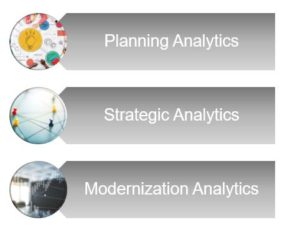Yesterday’s Analysis to Today’s AI Learning Analytics
A little more than decade ago, I did research as part of my final project for the educational specialist degree. It was titled, “Do Employee Attitudes about Online Training Correlate with Safety Records in a Large Manufacturing Corporation?” and was presented as a roundtable discussion at the 2012 AECT Conference. As part of the research, I reviewed safety training completion records for multiple sites for one year and compared that to the results of a survey distributed to participants.
The focus was on “if there is a correlation between employee attitudes about online training and the number of workplace safety incidents. The correlation between the types of worksite (high versus low safety sites) and the number of online courses completed … After exploring the types of worksites for correlations, we studied the number of incidents that took place at the sites each employee surveyed and how they correlated with their attitude about online training.”
Yesterday’s Analysis
How does my study from ten years ago relate to today’s analytics and learning? At the time, I was only able to study with a small group (less than 1000) of employees for one year. While this provided good data, the data should have been reflected in multiple years. Unfortunately, I did not have the resources (time, people, etc.) to complete the study at that level.
We know that in research the more data provided tends to lead to more valid and reliable results. Unfortunately, this is often a time-consuming and sometimes biased process for researchers. Understanding these potential issues, how do we as researchers and learning professionals move forward?
Today’s Learning Analytics

With today’s artificial intelligence (AI) capabilities, I would have had the potential to gather data from multiple years to assist with adding validity and reliability to the results. Further, I could have gathered more data from the other sources such as the (learning management system, safety records, safety site ratings, surveys, etc.). With AI the data can be analyzed, classified, and reviewed for correlations.
Leading us to a Learning Analytics AI solution that allows us to gather data from all those sources and more depending on clients’ needs. To complete the data picture, we provide dashboards that display the information at diverse levels for viewing specific trends and themes allowing organizations to make strategic decisions based on reliable, valid data.
As a demonstration, we have created multiple dashboards based on fictionalized learning data. These dashboards provide an opportunity to view the various types of themes and potential outcomes for representing the results.
Contact us to learn more about our AI Supported Learning Analytics Solution.

